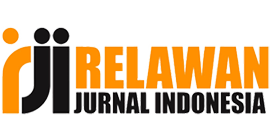Kualitas Hidup Sibling Anak dengan Autis
DOI:
https://doi.org/10.31539/jks.v3i2.1033Abstract
This study aims to identify the quality of life picture of sibling children with autism. The research design uses quantitative descriptive methods. The results showed as many as 17 people (51.51%) included in the first category, while as many as 16 people (48.48%) were included in the wrong category. There are two dimensions of quality of life that are still involved in the wrong group, namely the emotional aspect and the school dimension. Conclusion, quality of life will affect sibling growth and development so that efforts can be made to maintain and improve the quality of life of sibling children with autism through health education to sibling related to how to deal with the condition of children with autism and to families regarding the importance of social support for sibling children with autistic.
Keywords: Autism, Quality of life, Sibling
References
Aytekin, C. (2016). Siblings of Disabled Children: A General Overview in terms of Academic Studies. International Journal of Innovation and Applied Studies, 16(3), 522–527
Blankenship, J. (2016). Autism as an Ambiguous Loss: The Experience of Multiple Family Members. Dissertation Abstracts International: Section B: The Sciences and Engineering, 76(9–B(E))
Braconnier, M. L., Coffman, M. C., Kelso, N., & Wolf, J. M. (2018). Sibling Relationships: Parent–Child Agreement and Contributions of Siblings with and Without ASD. Journal of Autism and Developmental Disorders, 48(5), 1612–1622. https://doi.org/10.1007/s10803-017-3393-9
Chan, J. Y., & Lai, K. Y. (2016). Psychological Adjustment of Siblings of Children with Autism Spectrum Disorder in Hong Kong. East Asian Archives of Psychiatry, 26(4), 141–147
Chodidjah, S., & Kusumasari, A. P. (2018). Pengalaman Ibu Merawat Anak Usia Sekolah dengan Autis. Jurnal Keperawatan Indonesia, 21(2), 94–100. https://doi.org/10.7454/jki.v21i2.545
Esfahani, F. N., Shooshtari, M. H., Sosfadi, R. S., Saeed, F., Jalai, F., Farsham, A., & Bidaki, R. (2018). Internalizing and Externalizing Problems, Empathy Quotient, and Systemizing Quotient in 4 to 11 Years-Old Siblings of Children with Autistic Spectrum Disorder Compared to Control Group. Iranian Journal of Psychiatry, 13(3), 192–200
Fithria, F., & Yusri, Y. (2016). Caregiver Burden pada Keluarga dengan Anak Berkebutuhan. Jurnal Ilmiah Mahasiswa Fakultas Keperawatan, 1(1), 1–5
Gona, J. K., Newton, C. R., Rimba, K. K., Mapenzi, R., Kihara, M., Vijver, F. V, & Abubakar, A. (2016). Challenges and Coping Strategies of Parents of Children with Autism on the Kenyan Coast. Rural Remote Health, 16(2), 1–15. https://doi.org/10.1002/andp.18742261215
Institute for Health Metrics and Evaluation. (2017). Global Burden of Disease Study 2016 (GBD 2016) Results. In Global Burden of Disease Collaborative Network (Vol. 2016, Issue Gbd 2016)
Khasanah, U. A., & Indrayati, N. (2019). Hubungan Perkembangan Psikososial dengan Prestasi Belajar Anak Usia Sekolah. Jurnal Ilmu Keperawatan Jiwa, 2(3), 157. https://doi.org/10.32584/jikj.v2i3.426
Latifa, U. (2017). Aspek Perkembangan pada Anak Sekolah Dasar : Masalah dan Perkembangannya. Journal of Multidisciplinary Studies, 1(2), 185–196
Lovell, B., & Wetherell, M. (2016). The Psychophysiological Impact of Childhood Autism Spectrum Disorder on Siblings. Research in Developmental Disabilities, 49–50, 226–234. https://doi.org/https://doi.org/10.1016/j.ridd.2015.11.023
McKechanie, A., Moffat, V., Johnstone, E., & Fletcher-Watson, S. (2017). Links between Autism Spectrum Disorder Diagnostic Status and Family Quality of Life. Children, 4(4), 23. https://doi.org/10.3390/children4040023
Naibaho, S. T., Victoriana, E., & Tjoeng, N. T. (2017). Studi Deskriptif mengenai Sibling Relationship pada Remaja dengan Saudara Spektrum Autisme. Humanitas (Jurnal Psikologi), 1(2), 103. https://doi.org/10.28932/humanitas.v1i2.419
Padila, P., Andari, F. N., & Andri, J. (2019). Hasil Skrining Perkembangan Anak Usia Toddler antara DDST dengan SDIDTK. Jurnal Keperawatan Silampari, 3(1), 244–256. https://doi.org/10.31539/jks.v3i1.809
Pangestu, N., & Fibriana, A. I. (2017). Faktor Risiko Kejadian Autisme. Higeia Journal of Public Health Research and Development, 1(2), 141–150
Panzilion, P., Padila, P., Amin, M., & Andri, J. (2020). Perkembangan Motorik Prasekolah antara Intervensi Brain Gym dengan Puzzle. Jurnal Keperawatan Silampari, 3(2), 510–519. https://doi.org/https://doi.org/10.31539/jks.v3i2.1120
Pattynama, P. C., & Pandia, W. S. S. (2016). Gambaran Kualitas Hidup Saudara Kandung Penyandang Autism Spectrum Disorder (Penelitian pada Remaja Akhir di Jakarta). Jurnal Pekotaan, 8(1), 1–11
Sujito, E. (2017). Dinamika Penerimaan Orangtua yang Memiliki Anak Berkebutuhan Khusus. Skripsi
Tomeny, T. S., Barry, T. D., & Fair, E. C. (2017). Parentification of Adult Siblings of Individuals with Autism Spectrum Disorder: Distress, Sibling Relationship Attitudes, and the Role of Social Support. Journal of Intellectual & Developmental Disability, 42(4). https://doi.org/https://doi.org/10.3109/13668250.2016.1248376
Wahyu, H., Betrianita, B., Pramesti, M. T., & Padila, P. (2018). Pengaruh Metode Glenn Doman (Tahap 1 dan 2) terhadap Perkembangan Komunikasi Anak Autisme di Autis Center Bengkulu. Jurnal Keperawatan Silampari, 2(1), 169–183. https://doi.org/10.31539/jks.v2i1.306
WHO. (2017). Early Child Development. https://www.tandfonline.com/loi/gecd20?open=187&year=2017&repitition=0#vol 187_2017
Yanti, R. D. (2017). Studi Fenomenologi Pengalaman Koping Remaja yang Memiliki Saudara Kandung dengan Autisme di Sekolah Luar Biasa Kota Padang. Jurnal Akademika Baiturrahim, 6(1), 17–25


